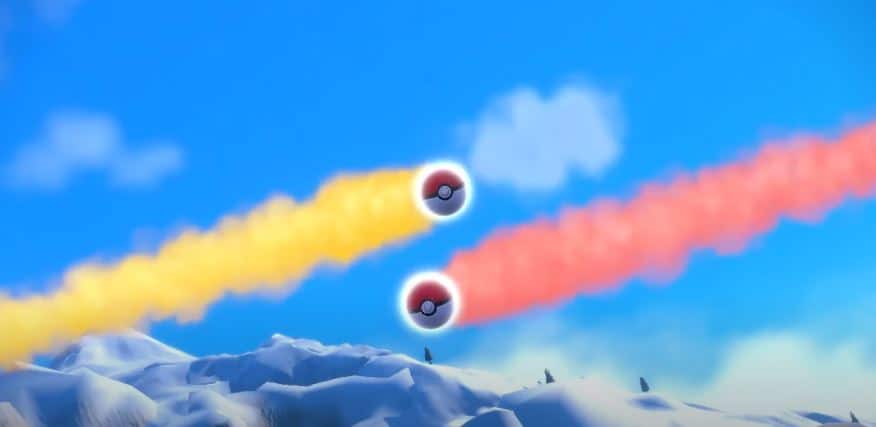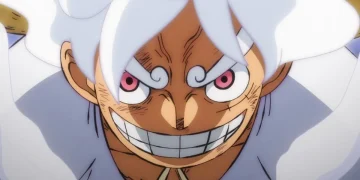We are back with another instalment of Pokemon Scarlet. Are you enjoying battling, catching, and training along with your Pokemon in this brand new amazing game of the Pokemon video game series? But now you want to exchange a Pokemon of yours with another better or more strategically developed Pokemon with your friend and want to know, How To Trade In Pokemon Scarlet? well, here you are, the best place to find out your answer.
Trading is a crucial element of the Pokemon games that enables trainers to exchange their Pokemon with other trainers. This feature is vital for trainers to collect all the different species of Pokemon, as certain species can only be obtained through trading. Trading is especially important for completing the Pokedex, which is a record of all the different species of Pokemon that a trainer has encountered or caught.
In the Pokemon games, starting from Generation II, certain items can be held by Pokemon. This allows for indirect trading of these holdable items. For instance, if a trainer wants to trade a Pokemon that is holding a specific item, they can exchange the Pokemon with another trainer in return for a Pokemon that the other trainer is willing to trade. However, some items, such as the Griseous Orb, cannot be traded because they are automatically placed back in the bag when a player with Origin Forme Giratina in their party enters the Union Room or Wi-Fi Room.
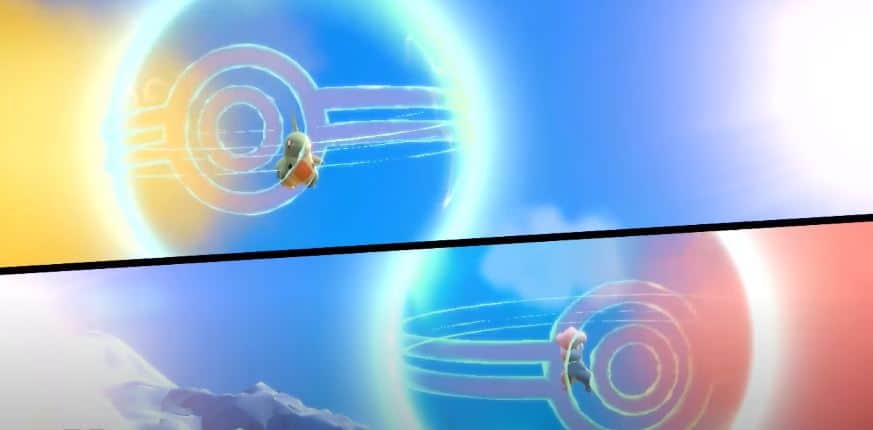
In certain instances, trading a Pokemon that is holding a specific item can cause the Pokemon to evolve. For instance, if a trainer has a Pokemon that evolves when traded while holding a specific item, they can exchange the Pokemon with another trainer to trigger its evolution.
In the main series of Pokemon games, the trading animation usually shows the standard Poke Ball being used, regardless of the type of Poke Ball the traded Pokemon was actually caught in. However, this was corrected in Pokemon Black 2 and White 2, in which the correct Poke Ball that the Pokemon was caught in is displayed during the trading animation.
How To Trade In Pokemon Scarlet?
Be aware that you will need access to the Poke Portal Menu for any trading to happen. If you just started out, you will not have access to it right away. You will need to progress in the game until you reach Los Platos Pokemon Center. This will be the first Pokemon Center you will encounter on your adventure. Do not worry the game has a linear progression, and you should reach it normally by playing as intended. Now you have Poke Portal, by pressing the ‘X Button’ on your controller.
Local Trading -> Without Internet Connection:
To trade Pokemon locally means no internet is required, it relies on local communication, and the player has to be near you in person with their own system and game to trade. You will you are local by noticing the “Offline Mode” notification in the top right corner.
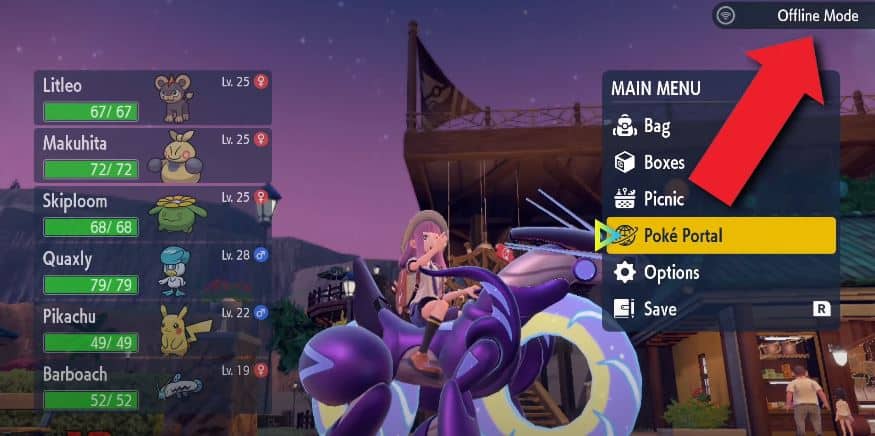
Now to trade locally with other players, follow the guide here:
- Start by opening the Poke Portal Menu.
- Select the Link Trade option.
- Select Begin Searching, in the sub-menu.
- The game will begin searching for a nearby trade partner to trade Pokemon with.
- Once they have found someone, you will be brought to your Inventory for the Pokemon you caught.
- Select the Pokemon you want to trade, and you will see the one you will receive in return.
- An animation of the trading process will play out and the Pokemon’s data will be registered to your Pokedex.
Online Trading -> With Internet Connection:
Keep in mind that all online methods will require you to have an active Nintendo Switch Online service. Internet trading will need you to be connected to the internet by pressing the “L Button” to be in Online Mode, seen in the top right corner. Otherwise, you will know you are not connected when seeing Offline Mode.
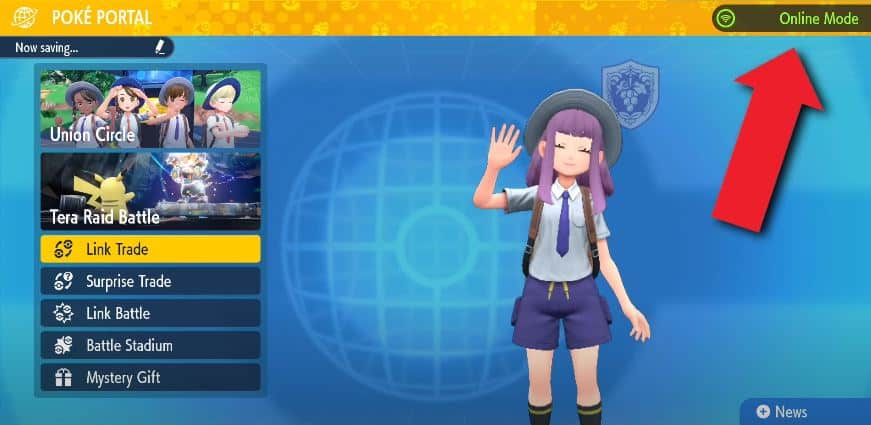
To trade with random players follow the guide here:
- Start by opening the Poke Portal Menu.
- Select the Link Trade option.
- Select Begin Searching, in the sub-menu.
- The game will begin searching for a nearby trade partner to trade Pokemon with.
- Once they have found someone, you will be brought to your Inventory for the Pokemon you caught.
- Select the Pokemon you want to trade, and you will see the one you will receive in return.
- An animation of the trading process will play out and the Pokemon’s data will be registered to your Pokedex.
What Are Some Benefits of Trading?
Trading is a crucial element of the Pokemon games that enables trainers to exchange their Pokemon with other trainers. This is a significant aspect of the gameplay because it allows trainers to collect all the different species of Pokemon and complete their Pokedex.
Some Pokemon can only be obtained through trading, as they are exclusive to certain versions of the game. For instance, if a trainer is playing Pokemon Red and wants to catch a Meowth, they will have to trade with someone who has caught a Meowth in Pokemon Blue because Meowth cannot be found in the wild in Pokemon Red.
Trading in the Pokemon games not only allows trainers to collect all the different species of Pokemon but it can also be used to trigger the evolution of certain Pokemon. Some Pokemon will only evolve when they are traded to another trainer and traded Pokemon receive 1.5 times the normal amount of experience points after a battle. Pokemon that are traded from a game in a different language receive 1.7 times the normal amount of experience points.
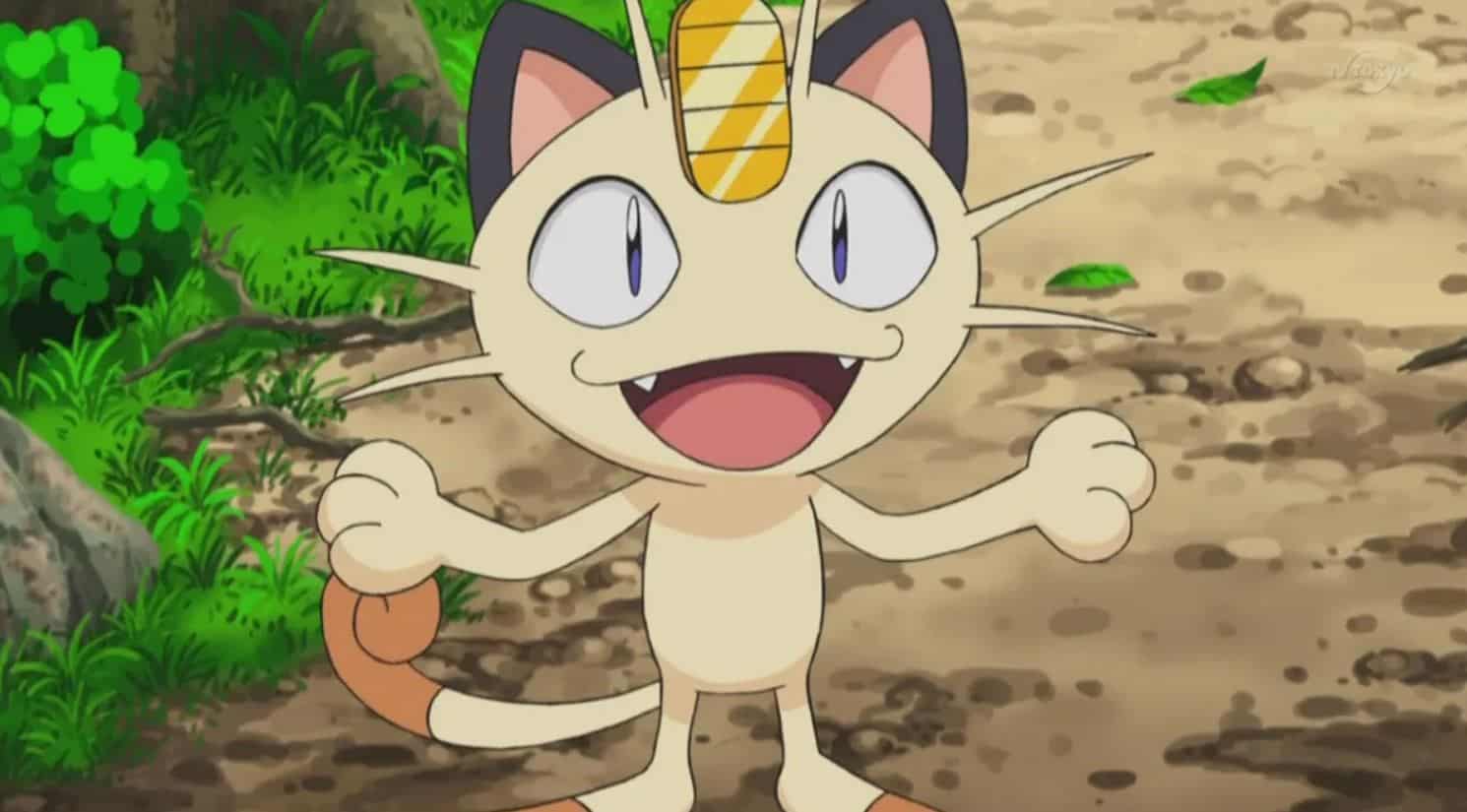
Trading can also be used to transfer rare and limited items, such as Master Balls or Soul Dews, from one game to another by giving a Pokemon an item. In Generations VI and VII, trainers can earn rewards such as Poke Miles or Festival Coins for making trades with other players. Overall, trading is a vital aspect of the Pokemon games that allows trainers to collect all the different species of Pokemon and acquire rare and limited items.
What Are Some Drawbacks of Trading:
A Pokemon that was originally trained by someone other than its current trainer is known as an outsider Pokemon. These Pokemon will only follow the commands of trainers who have earned a sufficient number of Gym Badges or Stamps, which are obtained by defeating Gym Leaders and completing other challenges in the Pokemon games.
When a Pokemon is traded from one game to another, its relationship with its trainer is reset to its base level unless it is returned to its original trainer. This means that the Pokemon’s loyalty and affection towards its trainer will be reset to the level it was at when it was first caught or obtained.
The nickname of an outsider Pokemon, which is a Pokemon that was originally trained by someone other than its current trainer, can only be changed by its original trainer. However, in Generation VIII, outsider Pokemon that do not have a nickname can be given one by their current trainer. Traded Pokemon are identified by their original trainer’s name and a unique ID number, which helps distinguish them from regular Pokemon. Starting in Generation III, each trainer also has a secret ID number that is used to identify their Pokemon.
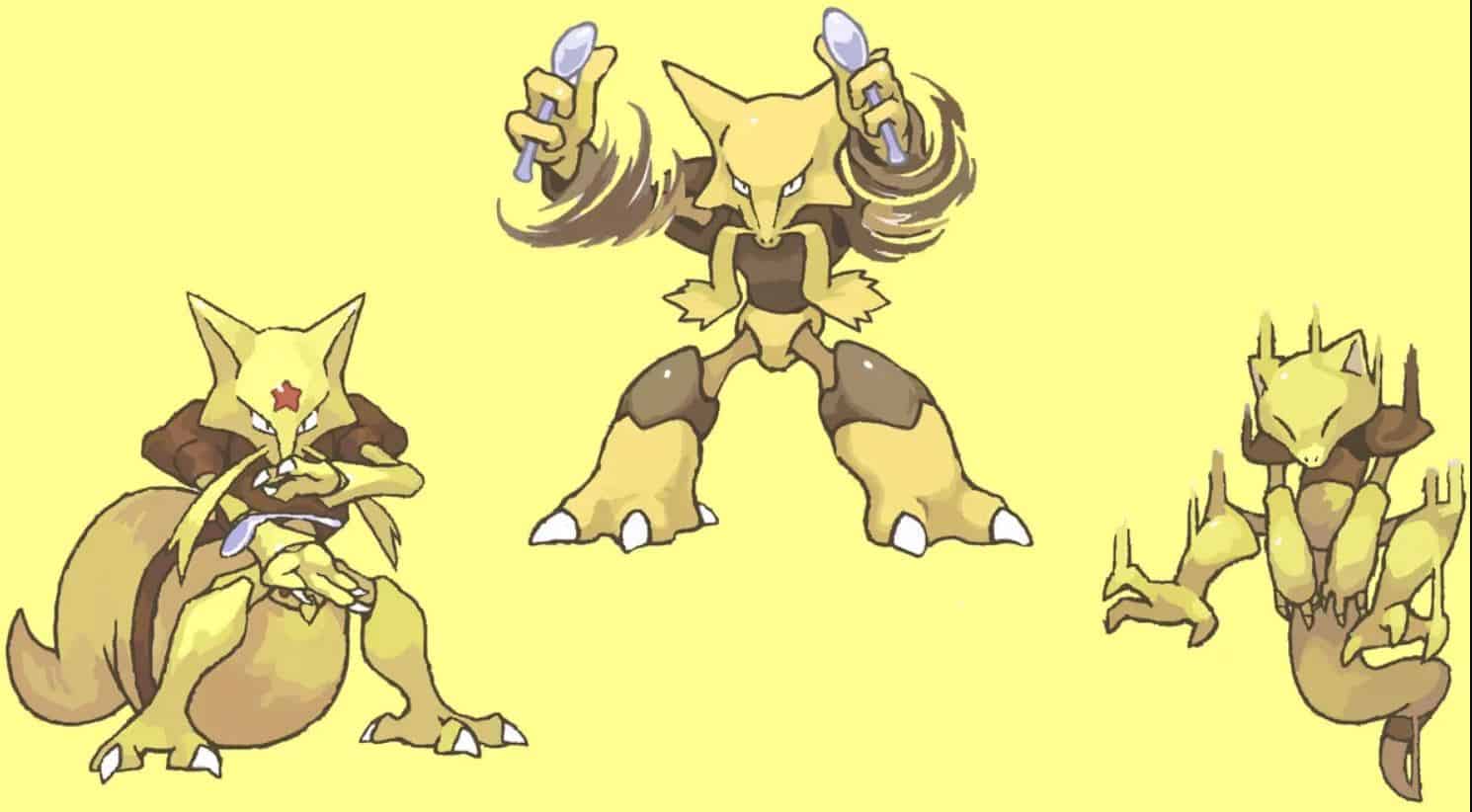
The combination of the original trainer’s name, ID number, and secret ID number makes it very unlikely that an outsider Pokemon will be mistaken for a regular Pokemon on a different cartridge. Trade-induced evolutions, which allow Pokemon to evolve into more powerful forms when traded, can be beneficial but cannot be manually cancelled.
Trainers can prevent a Pokemon from evolving when it is traded by giving it an Everstone, but in Generation IV and later, the Everstone does not prevent a traded Kadabra from evolving into Alakazam.
Trading In Anime:
In the Pokemon anime, trading Pokemon with other trainers is not a common occurrence and has only been shown in a few episodes. Most trades are carried out using a specialized machine that displays the silhouettes of the two Pokemon being traded as they pass each other.
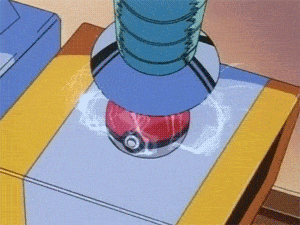
This machine appears to have been adapted into the game canon, as Professor Oak’s Laboratory in Pokemon Stadium and Pokemon Stadium 2 features this type of machine for trade. When Game Link Cables became able to accept the data of two Pokemon being traded at the same time, they were depicted as passing each other in the link space.
While trading is an essential aspect of the Pokemon games, as it allows players to collect all the different species of Pokemon and complete their Pokedex, it is rarely depicted in the anime. Only seven trades in the anime have been signed so far, with most of them taking place in episodes featuring the Magikarp salesman. Despite its importance in the games, trading is not a major focus of anime.
ALSO READ: Pokémon Journeys Episode 137: When Will It Happen?

